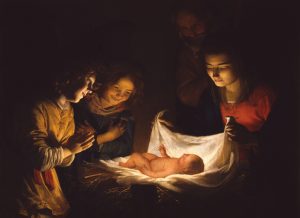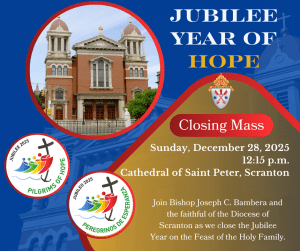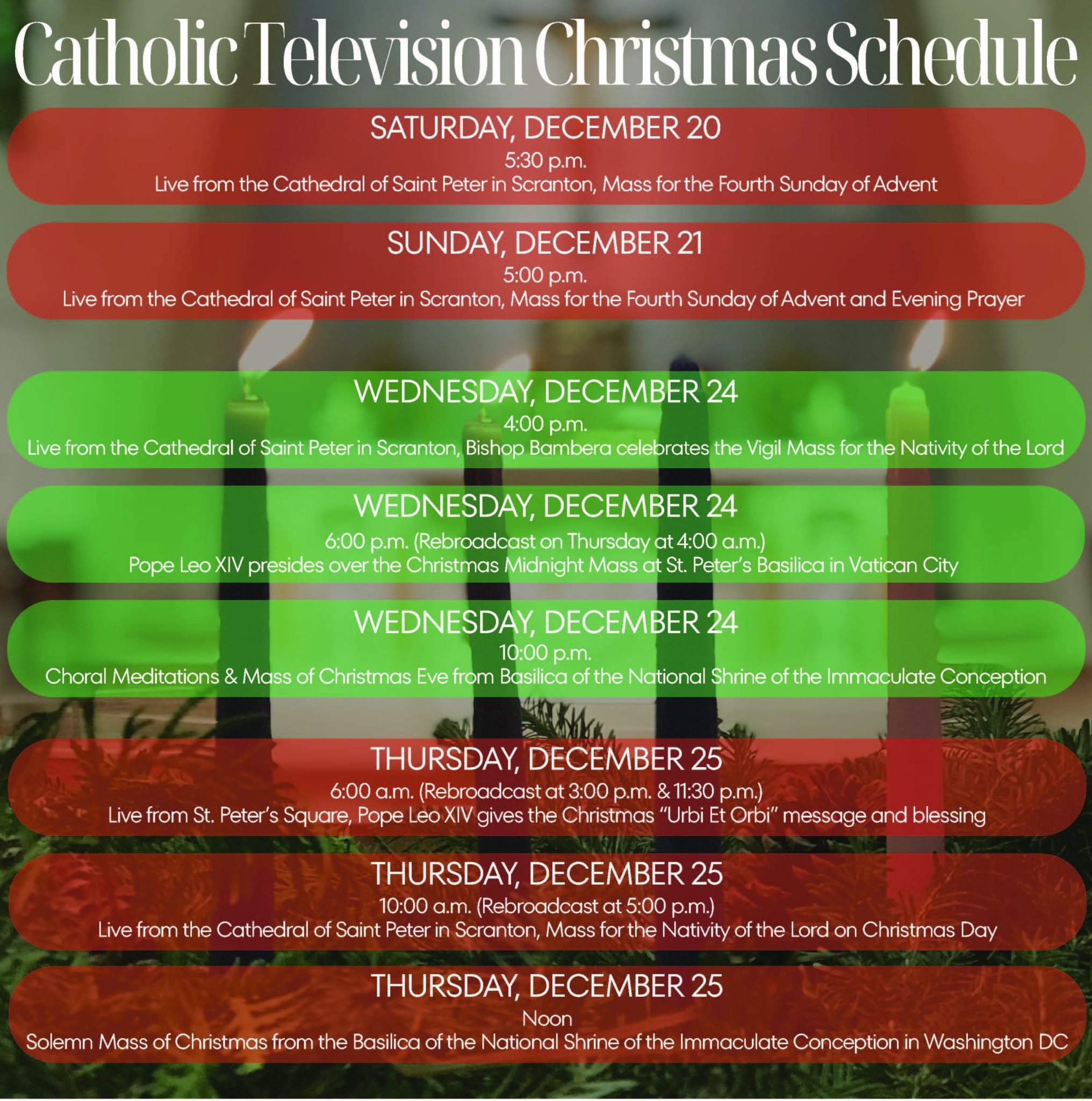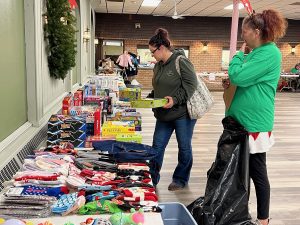Dear Friends in Christ,
In words echoed by Saint Matthew in his account of the birth of Jesus, the prophet Isaiah sets the stage for God’s redemptive plan: “Behold, the virgin shall be with child and bear a son, and they shall name him Emmanuel, which means God is with us.”

On January 6, 2026, the Solemnity of the Epiphany of the Lord, our Holy Father, Pope Leo XIV, will conclude the great Jubilee Year of Hope by closing the Holy Door in Saint Peter’s Basilica in Rome. In Catholic tradition, the Holy Door represents the passage to salvation – the entryway to God’s mercy which was opened to humanity by the incarnation of Jesus – the ultimate and supreme act by which He comes to meet people. Traditionally, Popes have closed the Holy Door as they proclaimed, “Deus qui in omni loco” (“God is here, everywhere”).
These words, which reflect those of Isaiah and Matthew, are the essence of the mystery of faith that we embrace as Christians and the heart of all that we celebrate during Advent and Christmas. They are both the foundation for our hope as believers in Christ and the motivating force of discipleship: “God is here, everywhere.”
In his homily for the First Sunday of Advent, Pope Leo reflected on the reality of God’s abiding presence in our lives, upon the hope that is ours through the incarnation and the responsibility incumbent upon all believers to live in the spirit of Christ’s redemptive love.
The Holy Father said, “The fruits of God’s action in our lives are a gift not only for us, but for everyone … serving as a reminder that the joy of goodness is contagious … We find in them an invitation to renew the power of our own witness of faith. Saint John Chrysostom spoke of the allure of holiness as a sign more eloquent than many miracles. He said: ‘The miracle happens and passes, but the Christian life remains and continually edifies … Let us therefore watch over ourselves, so that we may also benefit others.’”

The Holy Father concluded, “If we truly want to help the people we meet, let us keep watch over ourselves by cultivating our faith with prayer and with the sacraments, living it consistently in charity, and casting off works of darkness and putting on the armor of light.”
Sadly, however, while we are quick to embrace the hope that we are given through the birth of Jesus, we are often reluctant to heed his invitation to authentic discipleship. We fail to make as our own the message of salvation proclaimed throughout the ages by the life, love, mercy, and forgiveness of Jesus. We’re reluctant to heed Jesus’ invitation to walk in his footsteps. We wonder why we are unsettled and peace in our lives, our homes and our world seem so elusive. We question why God can’t provide us with a way out of suffering and pain in Ukraine, in the Middle East, in Nigeria, at our borders, in the lives of our immigrant sisters and brothers, in our neighborhoods, in our families and in our hearts. And we miss the treasure that has been given to each of us through faith.
My friends, for all the upheaval that we confront in our lives, the good news and blessing of Christmas is that “God is here, everywhere.” He has already provided us a way forward with hope if we are wise and humble enough to trust in his presence, to embrace the message of salvation born in Bethlehem, and to walk with him as faithful disciples, making the pattern of his life our own for the sake of a broken world.
During these cherished days, may we give thanks for countless numbers of blessings. May we pray for peace in our world and in our hearts. And may we open our lives to the grace and mercy of God won for us through the child named Emmanuel – God with us!
With gratitude for the privilege of serving as your Bishop and with prayers for a holy and blessed Christmas for you, your family and all you hold dear, I am
Faithfully yours in Christ,
Most Rev. Joseph C. Bambera, D.D., J.C.L.
Bishop of Scranton











